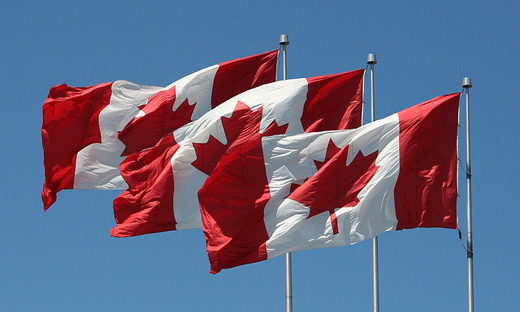
OTTAWA, Ont. – In a ruling that points up the differences – in workers’ favor – between Canada and the U.S., the Canadian Supreme Court has ruled that public workers there have a constitutional right to strike.
The 5-2 decision on Feb. 4 in a case from Saskatchewan, is grounded in Canada’s Charter of Rights and Freedoms-its constitution-the justices said. But it also reflects the fact that Canadian labor law, province by province, is more pro-worker than U.S. labor law. Many U.S. public workers, including all federal workers, lack the right to strike.
The Right-Wing Canadian federal government, which has a slim parliamentary majority, has been making noises about trying to override provincial labor laws and curb worker rights. It’s considering schemes crafted by the secretive Radical Right corporate American Legislative Exchange Council (ALEC) in the U.S., which several GOP-run states have approved.
As a result of Canadian laws and attitudes, union density there is at least double that in the U.S. The Canadian court’s ruling overturned limits on labor rights the then-new Saskatchewan government enacted in 2007, and extended the rights nationwide.
The Saskatchewan Federation of Labor brought the case, speaking for a raft of unions with locals on both sides of the border, including the Steelworkers, Teamsters Local 395, Amalgamated Transit Union Local 588, Office and Professional Employees Local 397 and the Retail, Wholesale and Department Store Workers’ province-wide union. The unions won.
The justices not only cited Canada’s own labor law, but went back to enactment of the original National Labor Relations Act in the U.S., in 1935, as inspiration – and a model – for provincial labor laws. Like the NLRA/Wagner Act, the justices said, Canadian provincial labor law’s purpose is to encourage industrial peace by promoting settlement of worker-management disputes through collective bargaining.
But the justices also grounded their ruling on Canadian law, saying the right to strike equalizes the playing field for workers, is part of the freedom of expression, and gives them leverage to reach those settlements, too.
“The right to strike is an essential part of a meaningful collective bargaining process in our system of labor relations. The right to strike is not merely derivative of collective
bargaining, it is an indispensable component of that right,” the court majority wrote.
“Where good-faith negotiations break down, the ability to engage in the collective withdrawal of services is a necessary component of the process through which workers can continue to participate meaningfully in the pursuit of their collective workplace goals. This crucial role in collective bargaining is why the right to strike is constitutionally protected.”
Besides ATU, the Steelworkers, the Teamsters, RWDSU and the Office and Professional Employees, other Canadian unions on the winning side at the Supreme Court included two Canadian Union of Public Employees locals, the Communications, Energy and Paperworkers Union of Canada and its locals, three Theatrical and Stage Employees locals, three IBEW locals, the provincial building trades council, a Mine Workers local and the Saskatchewan Government and General Employees.
SEIU-United Health Care Workers West and the Canadian Federation of Labor, among others, filed friend-of-the-court briefs.
In a 2007 labor case from British Columbia – Canada’s third-most-populous province – the court said the Basic Charter’s “values of ‘human dignity, equality, liberty, respect for the autonomy of the person and the enhancement of democracy’ supported protecting the right to a meaningful process of collective bargaining.”
“The right to strike is essential to realizing these values through a collective bargaining process because it permits workers to withdraw their labor in concert when collective bargaining reaches an impasse,” the justices said.
“Through a strike, workers come together to participate directly in the process of determining their wages, working conditions and the rules that will govern their working lives. The ability to strike thereby allows workers, through collective action, to refuse to work under imposed terms and conditions. This collective action at the moment of impasse is an affirmation of the dignity and autonomy of employees in their working lives,” the justices added.
They also said the right to strike “promotes equality” in bargaining between workers and management. The justices reiterated “the deep inequalities that structure the relationship between employers and employees, and the vulnerability of employees in this context.
“While strike activity itself does not guarantee a labor dispute will be resolved in any particular manner, or that it will be resolved at all, it is the possibility of a strike which enables workers to negotiate their employment terms on a more equal footing,” the Canadian Supreme Court majority wrote.
Photo: Labor law has been added to health care as another example of how Canada seems to do some things better than they are done in the United States. | Victor To/Flickr












Comments